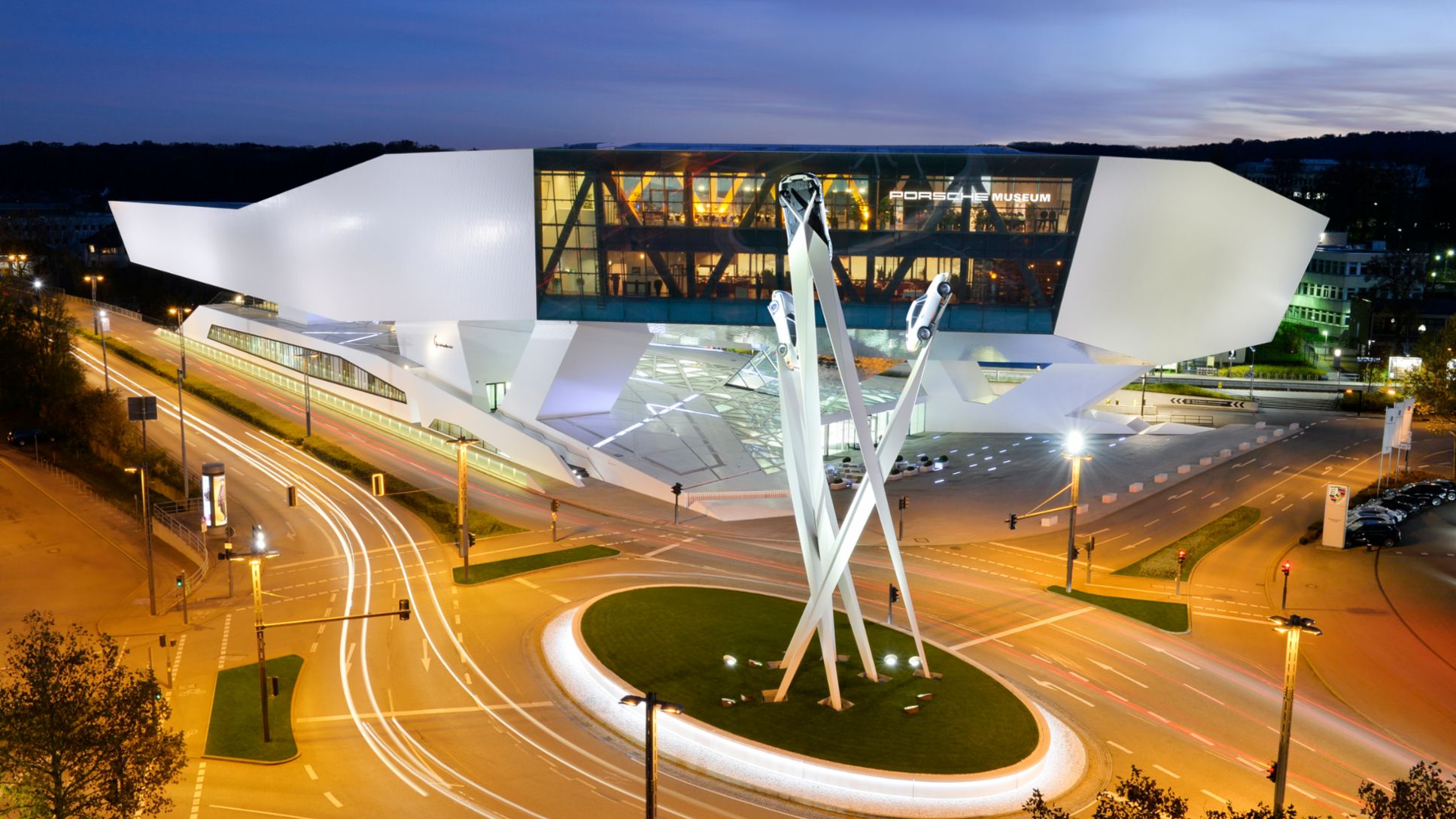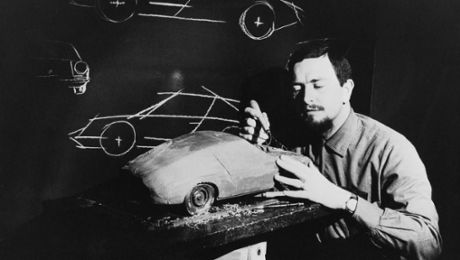“No other car brand has enjoyed such an intense, thrilling and exciting history,” emphasised Dr. Wolfgang Porsche, Chairman of the Supervisory Board of Porsche AG, at the celebrations to mark the anniversary “70 years of Porsche Sports Cars” in 2018. This quotation could also be a foundation stone for the Porsche Museum.
An idea became reality. Today, one of the world’s most spectacular automobile museums is located directly next to the headquarters of Dr. Ing. h.c. F. Porsche AG in Stuttgart-Zuffenhausen. The Porsche Museum.
The 5,600 square metres of exhibition space in the futuristic museum building created by the Viennese architectural office Delugan Meissl accommodate over 80 vehicles – from the first designs of the young Ferdinand Porsche through to the current vehicle generations.
Since it first opened on 31 January 2009, the Porsche Museum has presented the fascination and diversity of the Porsche brand to over 4.5 million visitors from all over the world. The Porsche Museum serves as a meeting point for international customers as well as many enthusiasts from all over the world who are fascinated by Porsche sports cars, even if they do not drive a Porsche themselves. While the bold architecture of the building reflects Porsche’s uniqueness, confidence and heritage, the exhibition keeps the history of the company alive with all the sports cars that are fully functional and in a good running condition in the “Museum on Wheels”. That makes the museum suitable not just as an exhibition space, but also as a platform for communication – a core component of the regular dialogue that Porsche maintains with the general public.
The sports car manufacturer celebrates its museum: on 31 January 2009, the first visitors entered the spectacular building at Porscheplatz 1 in Stuttgart-Zuffenhausen. Since then, the museum became the focal point of the brand, where the past, present and future of the Porsche idea come together.
The Porsche Museum does not just look back at historical communication, but transports the values of the brand authentically and vividly into the present and future. The clear commitment to electric mobility, which will massively transform Porsche’s product range by 2025, also goes hand-in-hand with a clear commitment to the roots of the sports car manufacturer. “At first sight, digitalisation and electric mobility seem to be in contradiction to the company’s history. But in the future it will increasingly be our task to show the origins and therefore the experience of Porsche in automotive engineering through modern channels.” The Porsche Museum will present the history of Porsche in an even more functional and emotive way. “For the next ten years, we will therefore devote our efforts to the ‘Mission Future Heritage’”, explains Achim Stejskal.
In contrast to other car museums, the Porsche Museum has intentionally not been designed as a shiny adventure world. In the Porsche Museum, the vehicles should speak for themselves. The presentation concept is based on the exhibits and not from the desire to provide an experience. The museum furthermore embraces an educational mission to fulfil a trendsetting cultural function at the traditional Zuffenhausen location: Using state-of-the-art pedagogical methods for museums, the exhibition conveys a wealth of historical and contemporary knowledge about the Porsche company. Depending on their individual interests, visitors can approach the exhibits and the company’s history from a variety of perspectives. A twelve-metre long “multitouch wall” allows visitors to immerse themselves in the history of Porsche on an interactive, virtual basis at the end of the tour.
Porsche deliberately avoids marketing-led declarations in its communication with visitors, instead placing the emphasis on its cultural mission to educate. In keeping with its pre-eminent position within the German automotive industry, Porsche uses the museum as a platform for informing national and international visitors about the history and achievements of the German automotive industry. Alongside its thematic direction, a notable attribute of the exhibition concept is its flexibility, as befits the Porsche brand.
All vehicle exhibits are “mobile” in the truest sense of the word. In other words, the exhibition itself and all the media installations can easily be reconfigured and the exhibits changed, to maintain a high level of variety and appeal. A chronological tour presents the history of the motorsport and production vehicles of the company.
As well as the exhibition, the Historical Archive and the glass-fronted workshop for classic vehicles, the museum offers a wide range of catering facilities with a coffee bar, bistro and high-class restaurant. Designed predominantly in white, the museum world also houses generous conference areas. The Porsche Museum can also be used as an event venue for conferences, film screenings and concerts, for example, without interfering with the main exhibition.
The museum at Porscheplatz is located in an important site in German automotive history. This was where the former Porsche engineering office relocated, from Stuttgart city centre to Zuffenhausen Plant 1, as far back as 1938. In the same year, it became the birthplace of the model that ultimately evolved into the VW Beetle, followed by the Type 64 in 1939, the forerunner of all Porsche sports cars that was known as the “Berlin-Rome-Car”. Sports cars bearing the now world-famous Porsche crest have been built at Zuffenhausen since 1950.


